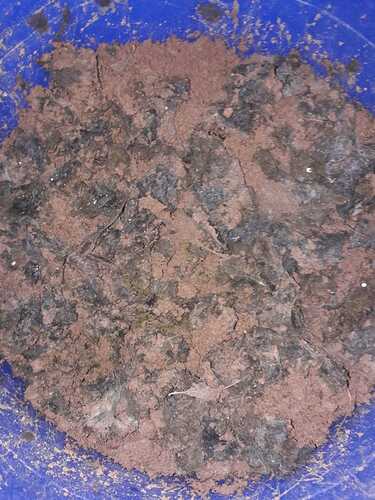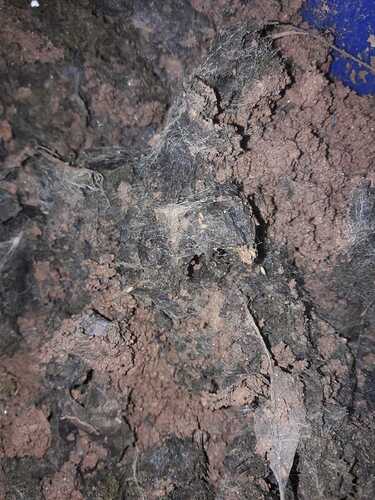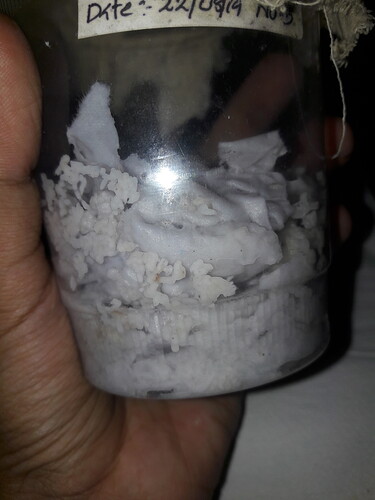I am trying to start vermiculture at my home. I have some already anaerobically decomposed material using bokashi mixture. I want to use that for vermiculture for decomposition by earthworms. What are your views? Will earthworms survive?
Where did you get that from?
@Akshitha Eagerly waiting for report of Vermipit, and your cup cultures.
How many earthworms do you have?
Which species? How are you sure it is Eiseina fetida? Are you planning to identify/confirm their species?
Please inform what are indicators to find your vermipit is working well?
@Ruchisk What is Bokashi mixture? Please explain it make people understand it better.
Why are you using it? What is the purpose?
How is it better that tissue paper cultures?
The vermipit is kept moist and the excess water is removed by the drainage system we made, as mentioned before.
There are two Eisena fetida in the vermipit. It’s been about 10 days since we have introduced them into this vermipit.
We can see fungi growing on taking a closer look.
@Arunan @Lydia @jaikishan
When are you expecting to get progenies of those 2 E.fetida ? What’s the life cycle and the time taken by each stage to complete? Please tell us about all these small small things so that everyone could have an expectation of getting more E.fetidas in these these many days…
The earthworms are healthy and happy (we know this because they are eating and excreting the tissue paper).
We had originally brought 10 Eisenia fetida from G-lab. Two had died and now we are left with a total of 8 earthworms. 2 of these have been introduced into the vermipit, the rest and still in cup cultures.
We shall conduct an identification to prove that these are indeed Eisenia fetida.
The vermipit is working well…fungi is seen to be growing…kept perfectly moist…no smell and the drainage is working well too
@jaikishan
@Ruchisk I too want to know more about this Bokashi mixture. What are it’s constituents? Where did you get this mixture? Why do you think it’d be beneficial for the vermipit? Tell us more.
Why dont you go through your vermipit soil everyday ? According to me and @baviskarritik
The soil should be moist and also very porous like when you pick up some soil from the pit it will even stay in your hand and even be porous enough to fall like rice and i have made a keen observation when the cup cultures are too moist the earthworms climb the walls of the cup culture and then die in the space between the rubber band and the cup lid
@Sjuday2527 we dont need to do that experiment because we already know that the vermipit is very suitable for earthworm growth because its more like their natural environment unless its made that way because in cupcultures we only have tissue paper and less amount of the other nitrogenous nutrients but obviously more in the vermipit
@Akshitha you should add more of the earthworms for a better result
What exactly is your objective?
Please describe.
Are you sure your Design will help achieving your objective?
Do you want to suggest a better design for optimum result? @Akshitha
So, growth of fungi was an expected result of your Vermipit design?!!
"We shall conduct an identification to prove that these are indeed Eisenia fetida "
Please tell us how are we going to systematically identify the Earthworms that you brought from G Lab HBCSE, TIFR @Akshitha
Yes i agree with @Akshitha because the occurrence of fungus show that there are dead decaying matter even some hbcse cube old earthworm cup cultures have fungus only when the earthworms die off …hence occurence of fungus shows that the vegetable peels are decaying and the vermipit is working well
The soil is sufficiently moist but we are observing some clumping. Arunan sir, on inspection told us that smaller vermipits might be easier to handle as well as easier to find the eworms.
Because there are only so few eworms in our huge vermipit.
Pls make a video of how to make a good vermipit and share here @Akshitha this would be a good resource…
I’ve read that earthworms can make atleast 3 cocoons a week, and each cocoon can have 3-5 progenies. We haven’t spotted any cocoons yet.
Life span is around 3-5 years. Some can live longer.
But then again, we don’t know because the vermipit is so big, it’ll be hard to find the cocoons if any.
We’ll probably change our design.
Seriously does a single coccoon give rise to 3-5 progenies ??? ![]() I haven’t heard anything like this before… When can we get progenies from coccoon ? 3-5 years generally or only in adverse conditions. What change are you planning to do ?
I haven’t heard anything like this before… When can we get progenies from coccoon ? 3-5 years generally or only in adverse conditions. What change are you planning to do ?
@Sjuday2527 have you found any earthworm coocons in cup cultures in cube lab?
@Akshitha what is the evidence/reference for this statement?
Did you find any coocons? are you looking for them in your cultures?
why not find out and send some pictures?
@Akshitha what is the status of these earthworms currently?
what is the plan?
what research question are you planning to address with earthworms?


